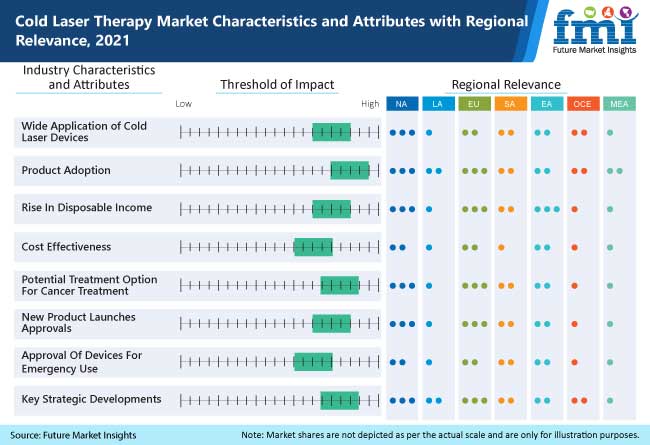The sales of ginseng are estimated to be valued at US$ 684.2 Mn in 2021. As per Future Market Insights (FMI), the overall ginseng market value is expected to reach US$ 1,093.6 Mn by 2031, rising at a CAGR of 4.8% for 2021-31. The sales of ginseng will represent approximately 1-2% of the herbal supplements market.
Growing consumer health consciousness is a significant factor in the food industry’s transformation. Customers not only tend to favor healthier meals, but they are more willing than ever before to pay for a non-GMO food products with no artificial ingredients. With the number of food companies looking for additives that include more nutrients in their products, thus the demand for ginseng is expected to rise.
Key Takeaways:
- China is expected to remain one of the most lucrative markets for ginseng around the world. This is expected to give impetus to the overall Asia Pacific market.
- Besides China, Korea has emerged as a leading consumer of ginseng.
- Among end users, pharmaceuticals segment is forecast to exhibit high demand. Through the course of the forecast period it is expected to represent a considerably high share of the market.
- Anti-oxidant and anti-inflammatory properties of ginseng boosts its application across diverse sectors.
- Ginseng can help improving heart health and reduce cancer risk. As a result of this, it is increasingly used in food products.
Consumer’s Willingness to Spend on Healthy Food Products Creates Growth Prospects
The increasing number of health conscious consumers creates a lucrative demography for the ginseng market. Consumers’ preference towards healthy food products is not just linked to their awareness, but willingness to spend higher on non-GMO food. Ensuring that a food product does not contain artificial additives is a major factor determining its future in the market. Furthermore, it is a masterstroke when a manufacture is able to attain approvals from legitimate international authorities. These factors pave way for the market’s growth.
The anti-inflammatory and anti-oxidant properties of ginseng helps in improving the overall immunity system of humans. For instance, using Koran ginseng has shown to improve heart health and cognitive functions of brain. Besides this, ginseng is believed to have anti-cancer effects. These benefits spur the use of ginseng in non-GMO food products.
Rising Consumption of Dietary Supplements Boosts Sales Opportunities
Focus on fitness and wellbeing corresponds directly to the increasing health consciousness among consumers. Given the scenario, the demand for dietary supplements is likely to accelerate impressively. The consumption of these supplements is not restricted to a certain age or demography, rather it has considerably surged across age groups. The report suggests that dietary supplements sales could double itself in the forthcoming years. Because ginseng supplements are organic and are often categorized under non-GMO products, their demand is forecast to increase in the near future.
Rising Demand for Plant-based Food Products to Bode Well in Coming Years
The rising demand for healthy and ethically produced products has bolstered the market for plant-based products. These products help in reducing risk of various diseases, mostly transmitted through meat products. This has fueled the demand for plant-based ginseng extracts. These are safe to use and can be incorporated in various personal care products, supplements, pharmaceutical products, food products among others.
Market Segments Covered In Ginseng Industry Analysis
By Source:
- Wild
- Cultivated
By Form:
- Raw
- Powder
- Extract
By Variety:
- Oriental Ginseng
- American Ginseng
- Siberian Ginseng
- Others
By End-use:
- Personal Care Products
- Dietary Supplements
- Food and Beverage Processing
- Pharmaceutical Products
Region:
- North America
- Latin America
- Europe
- Eastern Europe
- APAC excl. China
- China
- Middle East & Africa
Get more Insights Analysis on this Ginseng Market @ https://www.futuremarketinsights.com/ask-question/rep-gb-1577
Key Questions Answered in the Report
- How much is the ginseng market current worth?
Currently ginseng market is worth more than US$ 684.2 Mn.
- At what CAGR is the market expected to grow?
Ginseng consumption is expected to grow at a CAGR of around 4.8% during the period 2021-2031.
- How was the performance in the last five years?
In terms of revenue ginseng grew at a CAGR of around 4.9% during 2016-2020
- What are the key trends boosting Ginseng sales?
Development of innovative products, surge of ginseng in personal care industry are the latest trends of ginseng being observed in the market.
- How are market players reacting to the new developments in the market?
Market players are opting for offering products with various claims, new product developments and production capacity expansion.
About FMI:
Future Market Insights (FMI) is a leading provider of market intelligence and consulting services, serving clients in over 150 countries. FMI is headquartered in Dubai, the global financial capital, and has delivery centers in the U.S. and India. FMI’s latest market research reports and industry analysis help businesses navigate challenges and make critical decisions with confidence and clarity amidst breakneck competition. Our customized and syndicated market research reports deliver actionable insights that drive sustainable growth. A team of expert-led analysts at FMI continuously tracks emerging trends and events in a broad range of industries to ensure that our clients prepare for the evolving needs of their consumers.
Contact Us:
Future Market Insights
Unit No: AU-01-H Gold Tower (AU), Plot No: JLT-PH1-I3A,
Jumeirah Lakes Towers, Dubai,
United Arab Emirates
For Sales Enquiries: sales@futuremarketinsights.com
For Media Enquiries: press@futuremarketinsights.com
Website: https://www.futuremarketinsights.com
